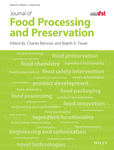Electro activated water mechanism on Escherichia coli and Enterococcus faecalis and optimization of operating parameters
Funding information: The Scientific and Technological Research Council of Turkey (TUBITAK), Grant/Award Number: 113Y572
Abstract
In this study, the efficacy of electro activated water (EAW) and its mechanism on Escherichia coli and Enterococcus faecalis were investigated. The effects of different operating parameters of EAW on inactivation of bacteria were evaluated by response surface methodology (RSM). The interaction of free chlorine concentration and treatment time at 25 °C had a synergetic effect on E. coli and E. faecalis inactivation. The increase in crystal violet uptake showed the deterioration of cell membrane permeability. The release of 260 nm absorbing materials from both bacteria increased after EAW treatment. Protein degeneration increased with deformation of E. coli and E. faecalis cell membranes, which in turn was followed by the release of proteins together with other intracellular components such as DNA, RNA, potassium, and phosphate.
Practical applications
An electrode module was setup to produce EAW from a mixture of salt and tap water. Freshly prepared EAW was added to the bacterial pellets, mixing thoroughly and immediately initiating a timer. The mixtures were set at different treatment times. The effects of three operating parameters (treatment time, free chlorine concentration (FCC) and temperature) on bacteria inactivation were investigated using Response surface methodology. Crystal violet uptake assay, 260 nm release study and FT-IR spectroscopy analysis were conducted to determine the mechanism of action of EAW.
CONFLICT OF INTEREST
No conflict of interest declared for this manuscript.




